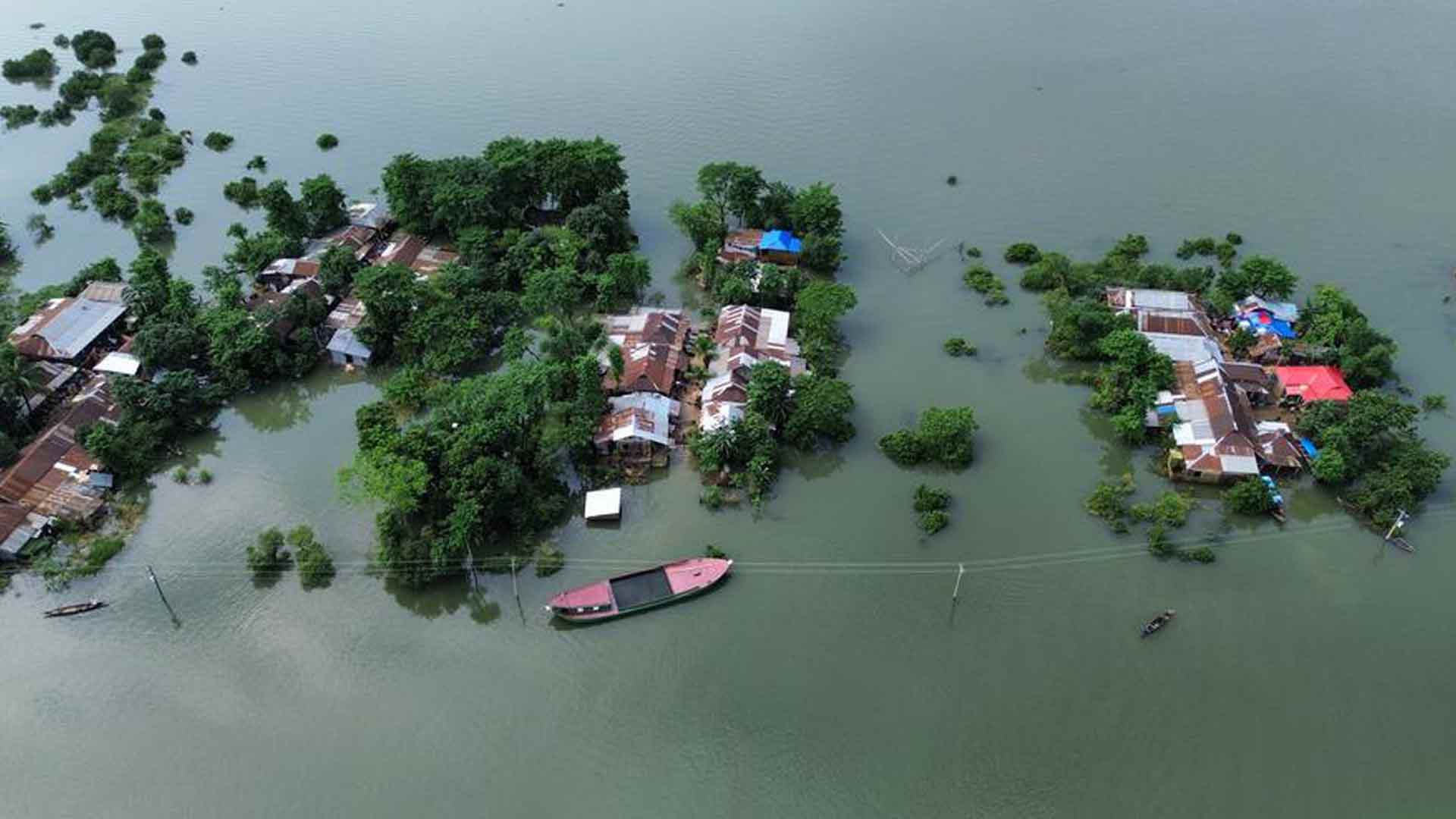The northeastern region of Bangladesh, including Sylhet, Sunamganj, Moulvibazar, and Habiganj, has endured severe and prolonged flooding in recent months. This has led to significant devastation and a pressing humanitarian emergency. The floods have caused extensive damage, exacerbated by heavy monsoon rainfall and critical river overflow. The impact on residents, infrastructure, agriculture, and livelihoods has been substantial.
The Onset of Disaster:
The incessant monsoon rains caused rivers, including the Surma and the Kushiyara, to overflow their banks, triggering severe flooding at the start of June 2024. By mid-June, the situation had escalated into a full-blown catastrophe. The relentless rains and subsequent river overflows caused widespread flooding in four districts, submerging vast land areas and inundating homes, highways, and agricultural fields.
Human Impact:
The ongoing floods have compelled over 1.6 million people to seek refuge in relief camps and temporary shelters, directly impacting over two million residents and leading to the loss of their homes and possessions, according to government estimates. There are legitimate concerns about the potential outbreak of waterborne diseases in the flooded areas due to the absence of clean drinking water and adequate sanitation services. The humanitarian community has sprung into action with the utmost resolve. Local authorities and national and international humanitarian groups have been rigorously providing essential assistance items, including food, water, medicine, and temporary housing. However, the scale of the disaster has necessitated complete resource utilization, leading to urgent appeals for additional substantial aid to support the affected towns.
Infrastructure and Agricultural Damage:
The recent calamity has caused extensive damage to the infrastructure in several districts, but we are confident in our ability to address the challenges and rebuild. Despite the impassable roads and washed-out bridges, we are fully committed to effective recovery and relief efforts. Our resilient communities are coming together to support businesses, schools, and healthcare facilities to resume essential services and restore normalcy. Although the recession has significantly impacted the local economy, we are actively taking steps to assist farmers and ensure a successful recovery in food production. While the task ahead is formidable, we are steadfast in our determination to rebuild and emerge stronger than before.
Environmental and Long-term Concerns:
The floods have profoundly impacted the environment, but we can take steps to address the challenges. Prolonged inundation of land leads to soil erosion and reduced fertility, negatively impacting future agricultural productivity. However, we can work on implementing comprehensive disaster management methods and building resilient infrastructure to minimise the impact of future floods. Addressing ongoing concerns about the possible link between climate change and the increasing frequency and intensity of such natural disasters is vital. We can work towards a more sustainable and resilient future by taking proactive steps.
Government and Community Response:
After the proclamation of a state of emergency in the affected districts, the Bangladesh government has allocated funds to provide immediate aid and support for rehabilitation efforts. Bangladesh’s Prime Minister, Sheikh Hasina, has visited the flood-affected districts to assess the situation and ensure the efficient implementation of relief efforts.
In addition, local communities have demonstrated exceptional resilience and outstanding unity. Volunteers have actively participated in rescue efforts, delivering relief materials, providing general support, and offering aid to those in need. Community leaders are crucial in coordinating initiatives and ensuring assistance reaches marginalised people.
The recent floods in Sylhet, Sunamganj, Moulavibazar, and Habiganj have catalysed Bangladesh to urgently develop and implement efficient disaster preparedness and response systems. The government, international community, and local stakeholders must work closely together to provide comprehensive aid and bolster readiness for future natural disasters. This collaborative approach is essential as the affected regions begin rebuilding and revitalising their communities. Despite the widespread destruction, the residents of these areas have demonstrated remarkable cooperation and resilience, igniting a sense of hope. This exemplifies the unwavering perseverance and grit of the Bangladeshi population in the face of adversity.

